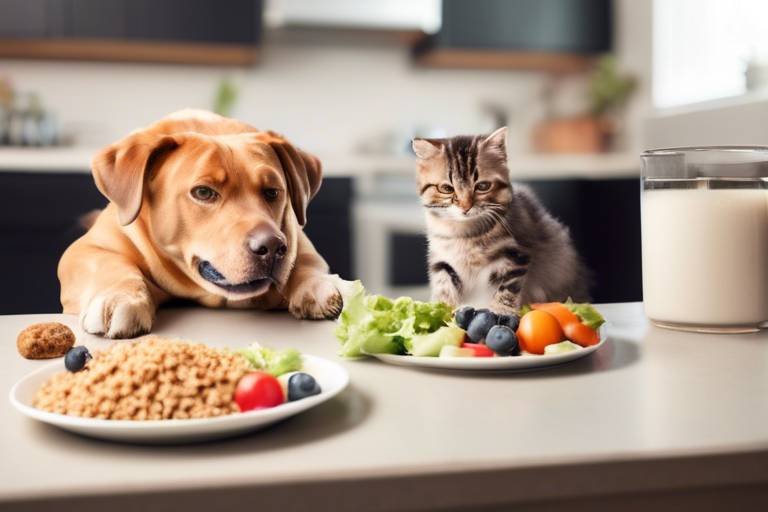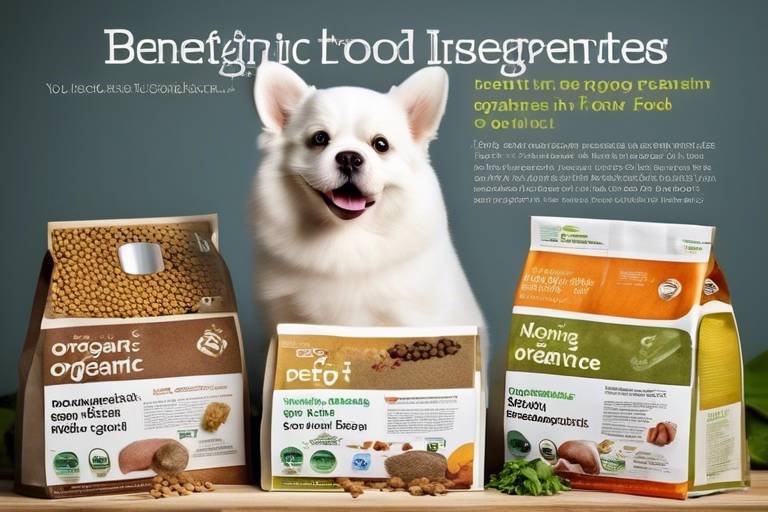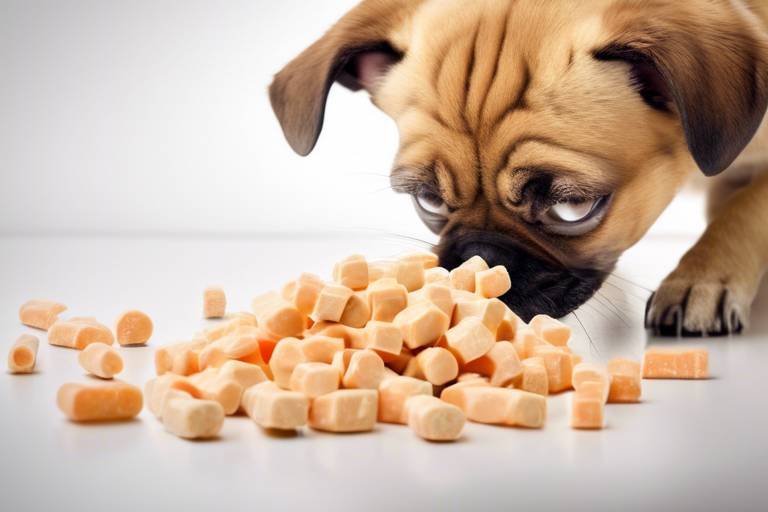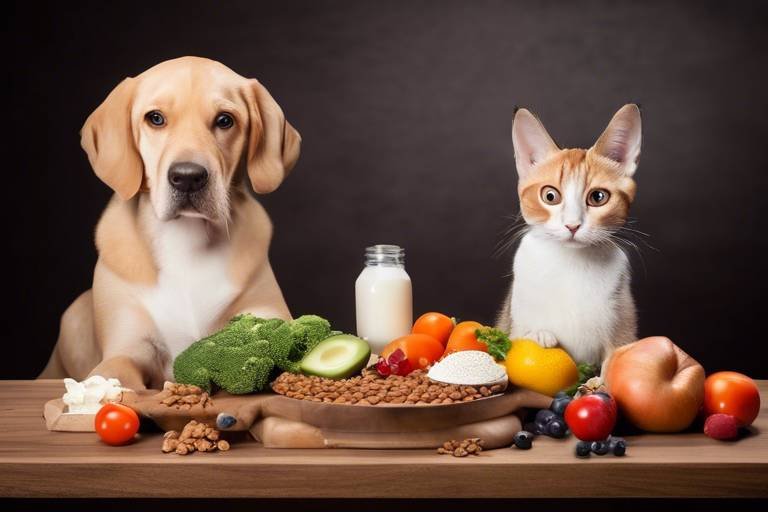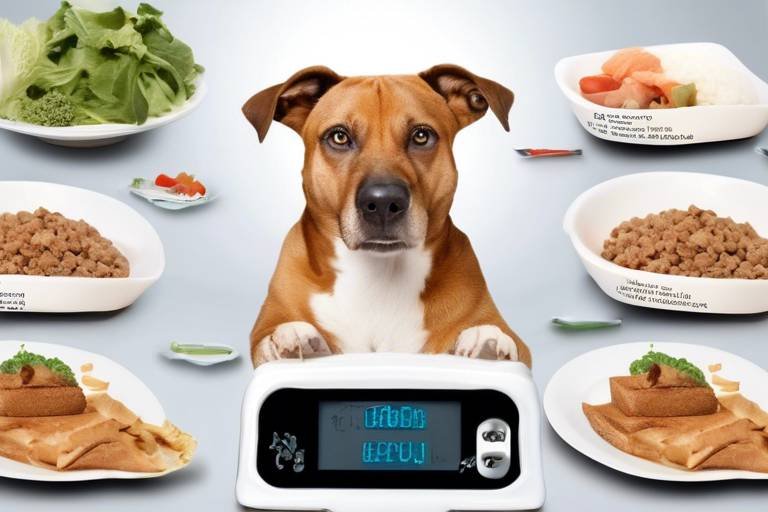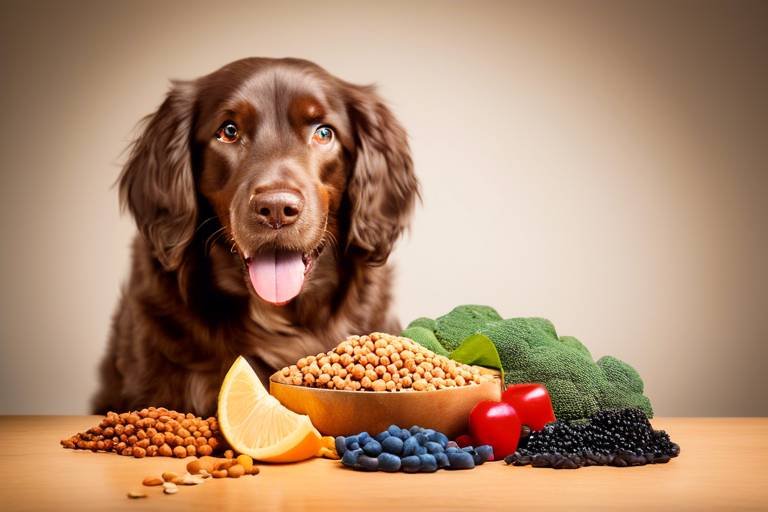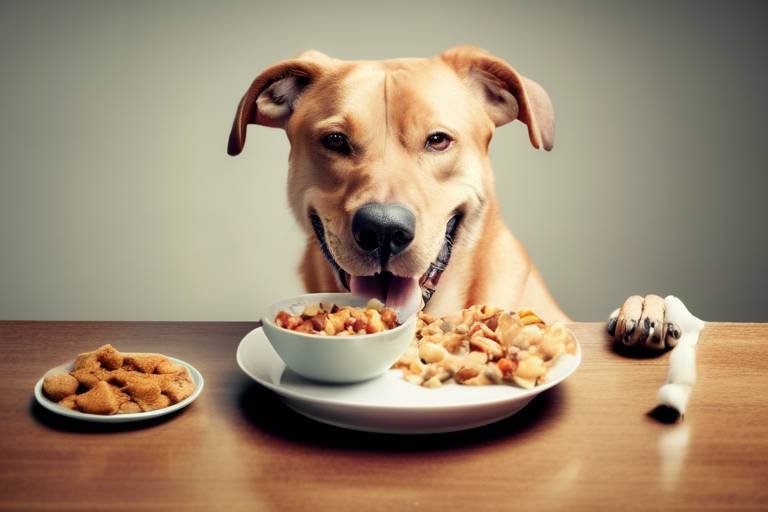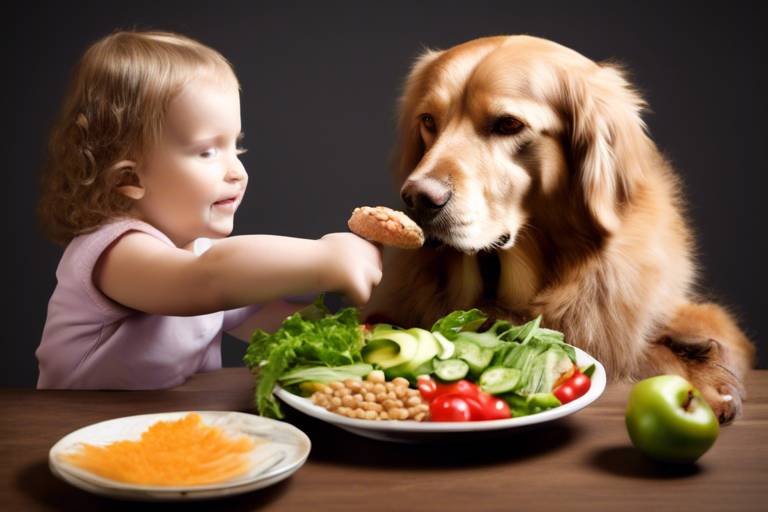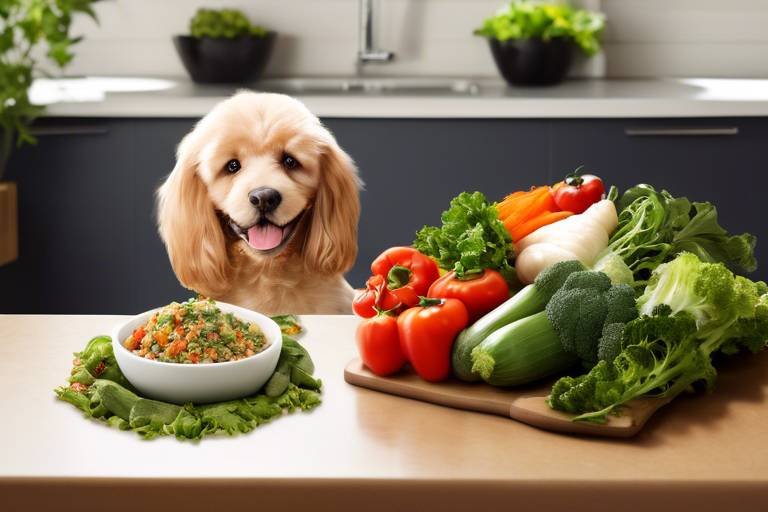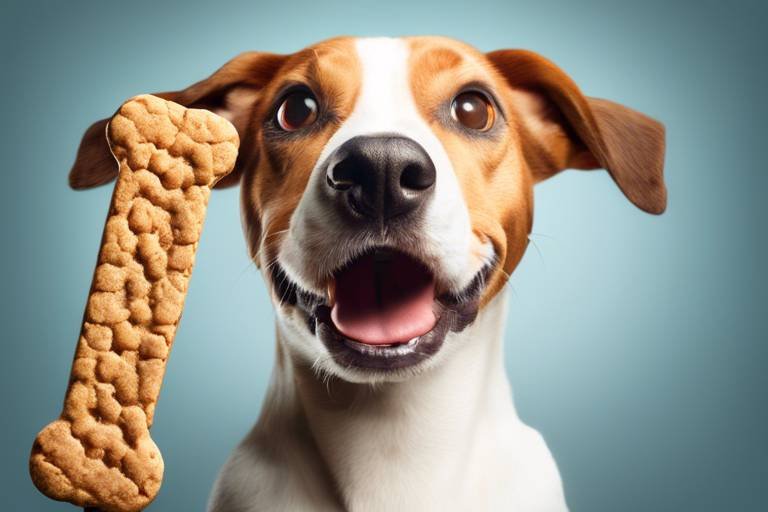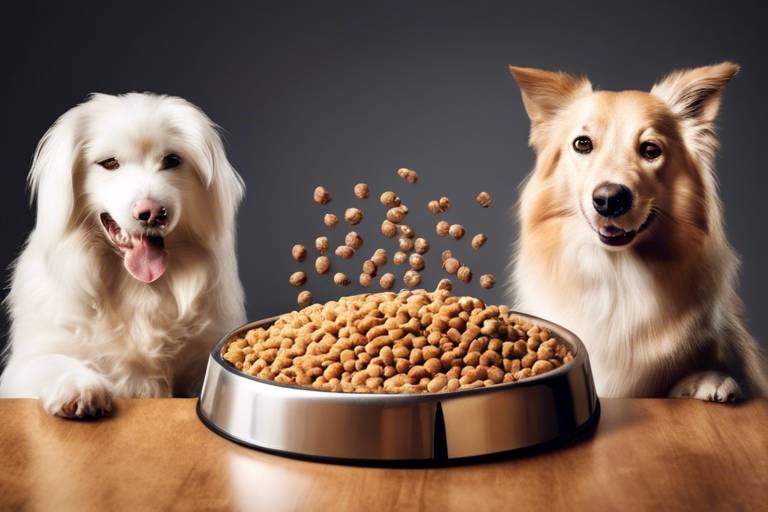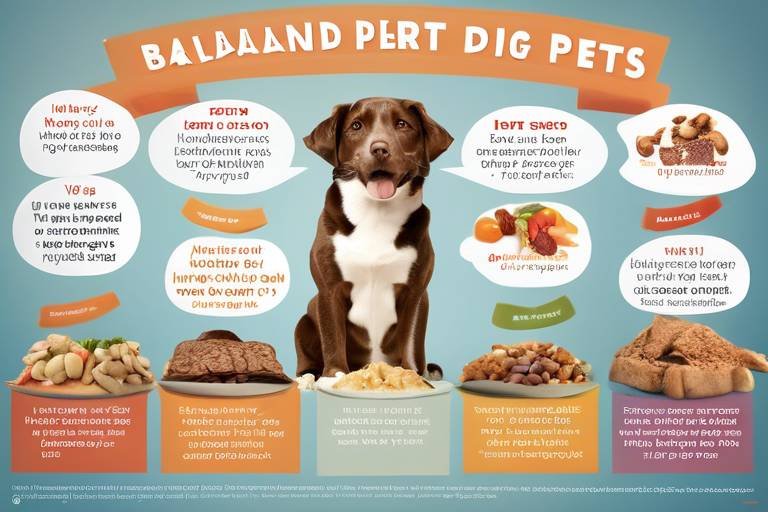How to Create a Custom Diet Plan for Your Pet
Creating a custom diet plan for your pet is not just about feeding them; it’s about ensuring their overall health, happiness, and longevity. Just like us, our furry friends have unique nutritional needs that evolve over time. Whether you have a playful puppy, a wise old cat, or a rabbit that hops around with boundless energy, understanding how to tailor their diet can make a world of difference. So, where do you start? Let’s dive into the essential steps that will guide you in crafting a personalized meal plan that caters to your pet's specific requirements.
Understanding your pet's specific dietary requirements is crucial. Factors like age, breed, weight, and health conditions play a significant role in determining what your pet should eat. For instance, a growing puppy will have different needs compared to a senior dog. Similarly, a highly active cat will require more calories than a couch potato feline. To get started, consider the following:
- Age: Puppies and kittens need more protein and calories for growth, while older pets may require fewer calories and more fiber.
- Breed: Different breeds have varying nutritional needs; for example, large breeds may be prone to certain health issues that require special diets.
- Weight: Maintaining a healthy weight is vital. Overweight pets may need a calorie-restricted diet, while underweight pets might need more nutrient-dense foods.
- Health Conditions: Pets with specific health issues—like diabetes or allergies—will need tailored diets to manage their conditions effectively.
Selecting high-quality ingredients is essential for your pet's diet. When crafting their meals, think about including a variety of food types that provide a balanced mix of proteins, carbohydrates, and fats. Each of these macronutrients plays a crucial role in your pet's health. For example, proteins are essential for building and repairing tissues, while carbohydrates serve as a primary energy source. Fats, on the other hand, are vital for healthy skin and coat.
Proteins are vital for your pet's growth and energy. When choosing protein sources, consider the following options:
- Meat: Chicken, beef, and lamb are excellent sources of high-quality protein.
- Fish: Salmon and tuna provide not only protein but also omega-3 fatty acids, which are great for skin and coat health.
- Plant-based Options: For pets that may require a vegetarian diet, legumes and quinoa can be good alternatives.
Exploring the differences between animal and plant proteins helps pet owners make informed choices about their pet's diet and overall health. While meat is generally considered a complete protein source, plant proteins can also be beneficial when combined correctly. Think of it like building a Lego structure; each piece has its role, and together they create a solid foundation. However, it’s essential to ensure that your pet receives all necessary amino acids, which may require a combination of various protein sources.
This section covers how to safely incorporate protein supplements into your pet's diet. If you feel your pet isn’t getting enough protein from their regular food, consider adding supplements. However, moderation is key. Too much protein can lead to health issues, so always consult with your veterinarian before making any significant changes.
Carbohydrates provide energy for your pet. They play a crucial role in maintaining energy levels throughout the day. When selecting carbohydrate sources, opt for whole grains like brown rice, oats, and sweet potatoes. These not only provide energy but also come packed with fiber, which is essential for good digestive health.
Understanding portion sizes and feeding frequency is crucial for maintaining your pet's optimal weight and health. A well-balanced diet is only as good as the portions you serve. Too much or too little can lead to obesity or malnutrition, respectively. Here are some guidelines based on your pet's specific needs:
Calculating your pet's daily caloric needs is essential for effective weight management. To do this, you can use the following formula:
For dogs: (30 x weight in kg) + 70 For cats: (15 x weight in kg) + 70
Adjust based on activity level; more active pets will require additional calories.
Establishing a consistent feeding schedule can improve your pet's digestion and behavior. Aim for two to three meals a day, depending on your pet's age and health status. Regular meal times can help prevent overeating and keep their metabolism steady.
Regularly assessing your pet's health and weight is vital to ensure the diet plan is effective. Keep an eye on their body condition and energy levels. If you notice any significant changes, it may be time to revisit their diet.
Recognizing signs of nutritional deficiencies can help you make timely adjustments to your pet's diet. Common symptoms include:
- Dry, flaky skin
- Excessive shedding
- Low energy levels
Working with a veterinarian ensures your custom diet plan meets all necessary health standards. They can provide valuable insights and recommendations tailored to your pet's unique needs. Remember, a professional touch can make all the difference in your pet's nutritional journey!
Q: Can I feed my pet homemade meals?
A: Yes, but ensure they are balanced and meet all nutritional requirements. Consult with a vet for guidance.
Q: How do I know if my pet is overweight?
A: Check for a visible waist and feel their ribs; if you can’t easily feel them, they may be overweight.
Q: Are there any foods I should avoid?
A: Yes, foods like chocolate, grapes, and onions are toxic to pets and should never be included in their diet.
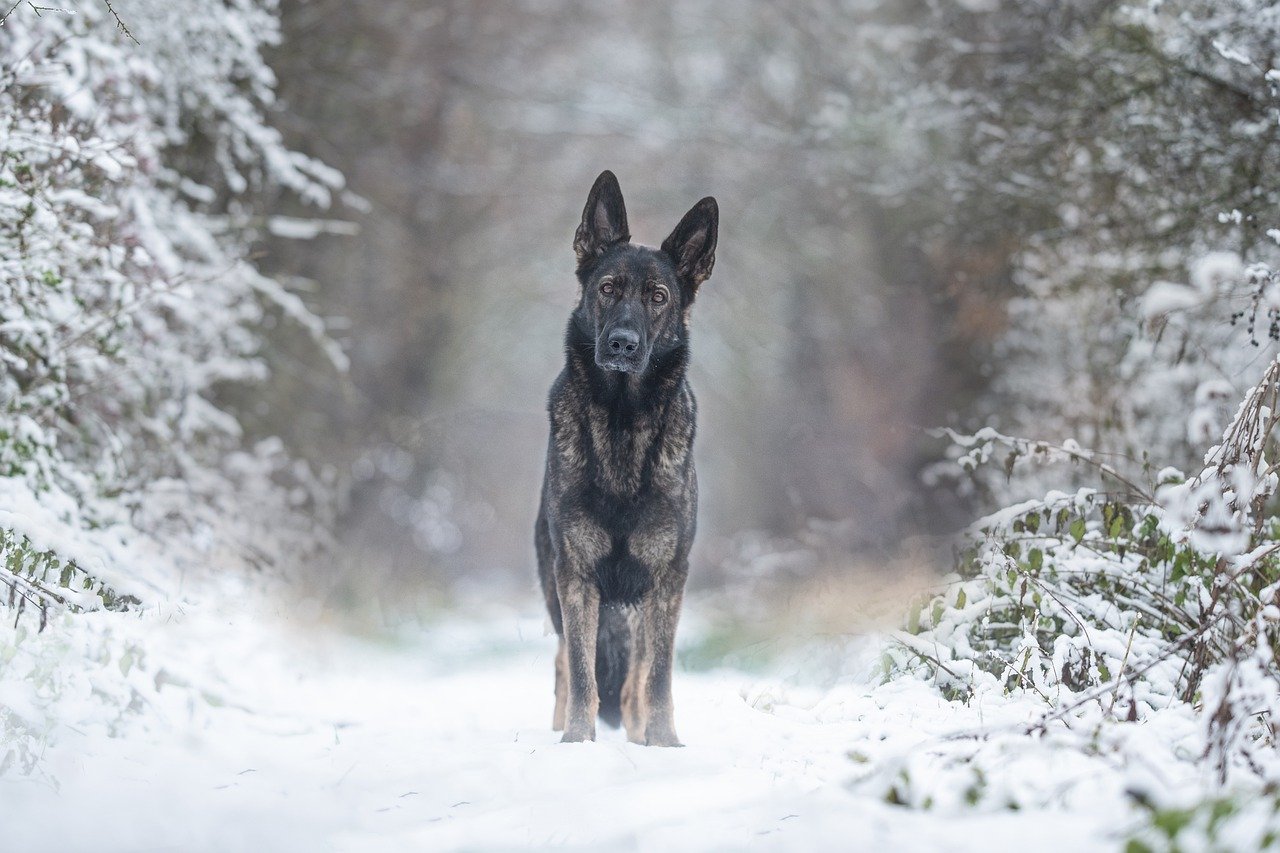
Assessing Your Pet's Nutritional Needs
Understanding your pet's specific dietary requirements is crucial for their overall health and happiness. Just like humans, pets have unique nutritional needs that can vary significantly based on a variety of factors. Age, breed, weight, and health conditions all play a vital role in determining what your furry friend should eat. For instance, a growing puppy has different needs compared to a senior dog. Similarly, a high-energy breed like a Border Collie will require a different diet than a more sedentary breed like a Bulldog.
To get started, it’s essential to assess these factors closely. For example, consider the following:
- Age: Puppies need more calories and nutrients for growth, while older pets often require diets that are lower in calories but higher in fiber.
- Breed: Some breeds are predisposed to specific health issues, which can influence dietary requirements.
- Weight: Overweight pets may need a calorie-restricted diet, while underweight pets may require a nutrient-dense diet to gain weight.
- Health Conditions: Pets with conditions such as diabetes, kidney disease, or allergies may need special diets tailored to their medical needs.
Moreover, it’s not just about what you feed your pet but also how much. Understanding the right portion sizes is critical. For example, a 10-pound dog will have different caloric needs compared to a 50-pound dog. You can find specific guidelines on pet food packaging, but it’s always a good idea to consult with your veterinarian for personalized advice.
In addition to these factors, monitoring your pet’s behavior and health can provide invaluable insights into their nutritional needs. Are they energetic and playful, or do they seem lethargic? Changes in weight, coat condition, and digestion can all signal whether your pet’s diet is meeting their needs. Keeping a food diary can help you track what your pet eats and how they respond to it, making it easier to spot trends and make necessary adjustments.
Ultimately, assessing your pet's nutritional needs is an ongoing process. As they grow, their requirements will change, and staying attuned to their needs can lead to a happier, healthier life for your furry companion.
- How can I tell if my pet is overweight? Look for ribs that are easily felt but not visible, a defined waist when viewed from above, and an abdomen that is tucked up when viewed from the side.
- What should I do if my pet has allergies? Consult your veterinarian for a proper diagnosis and dietary recommendations, which may include hypoallergenic foods or elimination diets.
- Can I feed my pet human food? Some human foods are safe for pets, but many are not. Always check with your vet before introducing new foods.
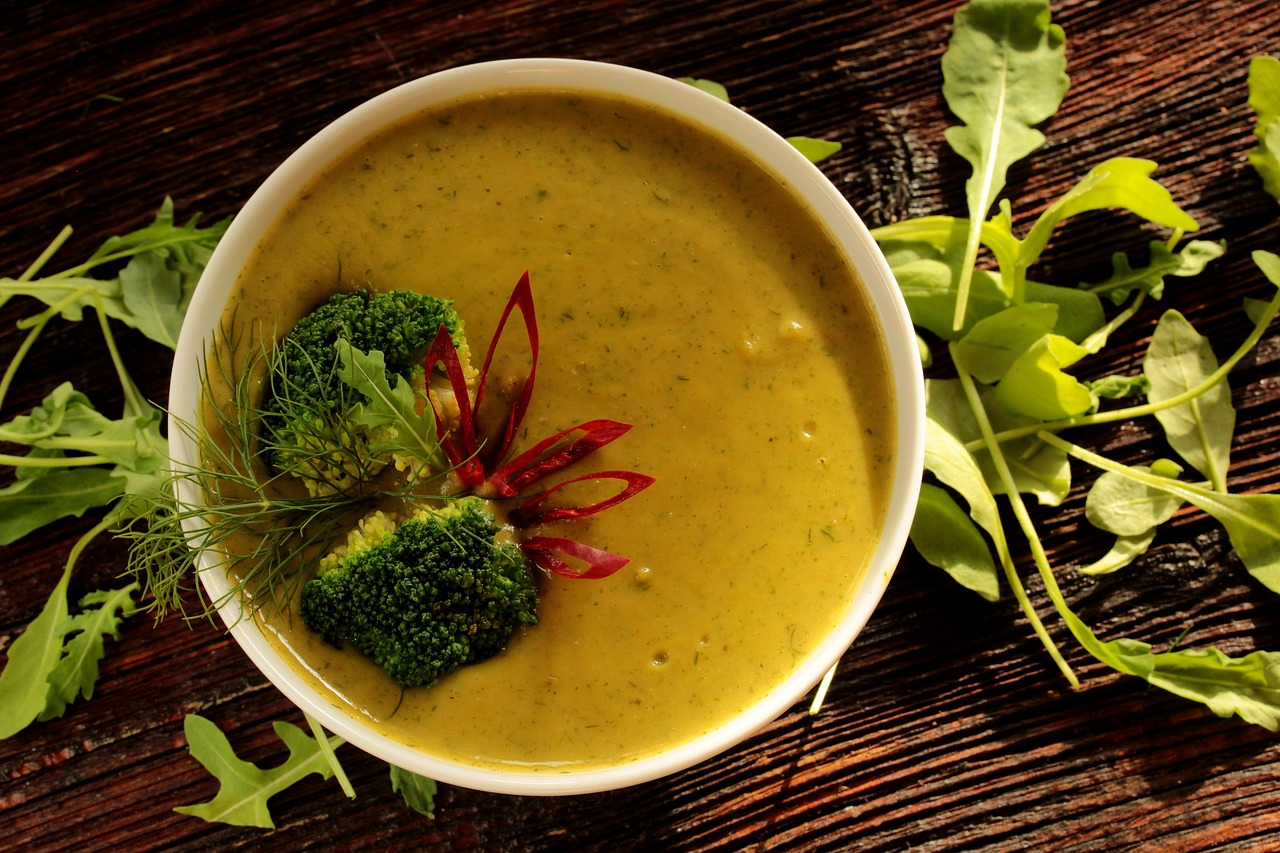
Choosing the Right Ingredients
When it comes to crafting a custom diet plan for your furry friend, selecting the right ingredients is absolutely crucial. Just like humans, pets require a balanced diet that includes a variety of nutrients to thrive. But how do you know which ingredients to choose? It’s not as daunting as it sounds! By focusing on three main categories—proteins, carbohydrates, and fats—you can create a well-rounded meal that keeps your pet healthy and happy.
First off, let’s talk about proteins. These are the building blocks of life! Proteins are essential for growth, energy, and overall health. Think of them as the bricks that build a sturdy house; without them, everything crumbles. When selecting protein sources, you have options like meat, fish, and even plant-based proteins. Each type has its own benefits, so mixing them up can provide a variety of amino acids that your pet needs. For instance, chicken and beef are excellent animal protein sources, while lentils and chickpeas can be great plant-based alternatives.
Now, moving on to carbohydrates. These are the fuel that keeps your pet's engine running smoothly. Carbs provide the energy your pet needs for playtime, walks, and all those little adventures they embark on daily. Opt for complex carbohydrates like brown rice, sweet potatoes, and oats, which are more nutritious than simple carbs. They digest slower, providing a steady energy release rather than a quick spike followed by a crash—much like choosing whole grain bread over white bread for your own meals.
Next up, we have fats. Yes, you read that right! Fats are not the enemy; in fact, they are essential for your pet’s health. They help with nutrient absorption and provide energy. However, moderation is key. Look for healthy fat sources like fish oil, flaxseed oil, or chicken fat. These can enhance your pet's coat, improve skin health, and even support brain function. Just remember, a little goes a long way!
To help you visualize the ideal balance of these ingredients, here’s a simple table:
| Ingredient Type | Examples | Benefits |
|---|---|---|
| Protein | Chicken, Beef, Lentils | Builds muscle, provides energy |
| Carbohydrates | Brown Rice, Sweet Potatoes, Oats | Provides energy, supports digestion |
| Fats | Fish Oil, Flaxseed Oil, Chicken Fat | Supports skin/coat health, aids in nutrient absorption |
In conclusion, choosing the right ingredients for your pet’s diet is more than just a chore; it’s an opportunity to enhance their quality of life. By carefully selecting a mix of proteins, carbohydrates, and fats, you’re setting the stage for a healthy, vibrant life for your beloved companion. Remember, every pet is unique, so take the time to observe how they react to different foods and adjust accordingly. Your pet’s happiness and health are worth it!
Understanding Protein Sources
When it comes to crafting a diet plan for your furry friend, is essential. Proteins are the building blocks of life, playing a crucial role in your pet's growth, energy levels, and overall health. Just like humans, pets require a balanced intake of proteins to thrive. But not all protein sources are created equal, and knowing which ones to include in your pet's diet can make a world of difference.
There are two primary categories of protein sources: animal proteins and plant proteins. Each type offers unique benefits and can be incorporated into your pet's diet in different ways. Animal proteins, such as chicken, beef, fish, and lamb, are generally considered complete proteins. This means they contain all the essential amino acids that your pet needs to maintain a healthy body. On the other hand, plant proteins, like beans, lentils, and quinoa, can also be beneficial but may lack one or more essential amino acids. Therefore, it’s vital to combine different protein sources to ensure your pet receives a balanced diet.
Here's a quick comparison of common protein sources:
| Protein Source | Type | Benefits |
|---|---|---|
| Chicken | Animal | High in protein, easily digestible, rich in vitamins B6 and B3 |
| Beef | Animal | Rich in iron and zinc, great for muscle development |
| Fish | Animal | High in omega-3 fatty acids, promotes a healthy coat and skin |
| Lentils | Plant | High in fiber, great for digestion, contains essential amino acids |
| Quinoa | Plant | Complete protein, rich in vitamins and minerals |
When selecting protein sources, consider your pet's specific needs. For instance, active dogs may require more protein to support their energy levels, while senior pets might benefit from easily digestible proteins to maintain muscle mass. Additionally, some pets may have allergies or sensitivities to certain protein sources, so it’s essential to monitor their reactions and consult with your veterinarian if you notice any adverse effects.
Incorporating a variety of protein sources into your pet's diet can also keep mealtime exciting. Just imagine your pet's delight as they enjoy a mix of chicken, fish, and lentils! Not only does this provide essential nutrients, but it can also help prevent food boredom and encourage healthy eating habits.
Ultimately, understanding the different protein sources available and their respective benefits is key to creating a well-rounded diet for your pet. By ensuring they receive a mix of high-quality animal and plant-based proteins, you can support their health and happiness for years to come.
- How much protein does my pet need? The amount of protein your pet needs can vary based on their age, breed, and activity level. Generally, active pets require more protein than sedentary ones. Consulting with your veterinarian can provide tailored recommendations.
- Can I feed my pet a vegetarian diet? Yes, but it’s crucial to ensure that the diet is well-balanced and includes all essential amino acids. Consulting with a veterinarian or a pet nutritionist can help you formulate a suitable vegetarian diet.
- Are there any protein sources I should avoid? Some pets may be allergic to certain proteins, such as beef or chicken. It’s essential to monitor your pet's reactions and consult with a veterinarian if you suspect a food allergy.
Meat vs. Plant Proteins
When it comes to choosing the right protein source for your pet, the debate between meat and plant proteins is as lively as a puppy chasing its tail! Each type of protein has its own set of benefits and potential drawbacks, and understanding these can help you make an informed decision that aligns with your pet's specific needs.
Let's break it down. Meat proteins are often considered the gold standard in pet nutrition. They are typically rich in essential amino acids that are crucial for your pet's growth, energy, and overall health. For instance, proteins derived from chicken, beef, and fish provide high biological value, meaning your pet can absorb and utilize these nutrients more efficiently. Pets, especially cats, are obligate carnivores, which means they thrive on a diet primarily composed of animal products. This makes meat an excellent choice for providing the necessary nutrients that might be lacking in a plant-based diet.
On the flip side, plant proteins can also play a significant role in your pet's diet, particularly for those who may have allergies or sensitivities to animal proteins. Sources like peas, lentils, and quinoa can be great alternatives, offering a variety of amino acids. However, it’s important to note that not all plant proteins provide complete amino acid profiles, so they often need to be combined with other protein sources to ensure a balanced diet. Additionally, plant proteins are generally lower in fat and calories, which can be beneficial for pets that need to manage their weight.
Here’s a quick comparison to help you visualize the differences:
| Aspect | Meat Proteins | Plant Proteins |
|---|---|---|
| Amino Acid Profile | Complete, high biological value | Often incomplete, may require combinations |
| Digestibility | Highly digestible | Varies, some may be harder to digest |
| Fat Content | Higher in fats, beneficial for energy | Lower in fats, may aid in weight management |
| Allergen Potential | Common allergens for some pets | Less likely to cause allergies |
In conclusion, whether you lean towards meat or plant proteins, the key is to ensure that your pet's diet is balanced and nutritionally adequate. It’s always a great idea to consult with a veterinarian or a pet nutritionist to create a diet plan that caters specifically to your furry friend's needs. After all, a healthy pet is a happy pet!
Supplementing with Protein
When it comes to ensuring your pet receives a well-rounded diet, protein supplementation can play a crucial role. Many pet owners wonder how to safely incorporate protein supplements without overwhelming their furry friends with too much of a good thing. It's essential to strike a balance that meets your pet's needs without causing any adverse effects. Just like us, pets require a specific amount of protein to thrive, and understanding how to supplement their diet effectively can make all the difference.
First off, let’s consider why protein is important. Proteins are the building blocks of life; they contribute to muscle development, repair tissues, and support a healthy immune system. If your pet is particularly active, recovering from an illness, or is in a growth phase, they might need additional protein. However, it’s vital to remember that not all protein sources are created equal. You should aim to choose high-quality proteins that are easily digestible.
Here’s a quick overview of some common protein supplements you might consider:
- Whey Protein: Great for pets that need a protein boost, but consult your vet first.
- Eggs: A natural source of protein that is highly digestible.
- Fish Oil: Not only does it provide protein, but it also supports a shiny coat and healthy skin.
- Bone Broth: A delicious way to add protein and hydration to your pet's diet.
However, before you start adding these supplements, it's crucial to consult with your veterinarian. They can help you determine the right type and amount of protein based on your pet's age, weight, health status, and activity level. Over-supplementing can lead to health issues such as kidney strain or obesity, so it’s always best to err on the side of caution.
Additionally, consider rotating protein sources to keep your pet's diet interesting and nutritionally balanced. Just like we enjoy a variety of flavors and textures, pets also benefit from diverse diets. You might find that your pet responds better to certain protein sources, and this can help you tailor their diet even further.
In conclusion, supplementing your pet's diet with protein can be beneficial when done correctly. Always prioritize high-quality sources, consult with a veterinarian, and keep an eye on your pet's overall health. By doing so, you can ensure that your furry friend remains strong, energetic, and happy!
Q: How much protein does my pet need?
A: The amount of protein varies based on factors like age, weight, and activity level. Consult your veterinarian for personalized recommendations.
Q: Can I use human protein supplements for my pet?
A: It's not advisable without veterinary guidance, as human supplements may contain ingredients that are harmful to pets.
Q: What are signs my pet might need more protein?
A: Signs can include lethargy, poor coat condition, or weight loss. If you notice any of these, consult your vet.
Q: How can I introduce new protein sources to my pet?
A: Gradually mix new protein into their current food over several days to prevent digestive upset.
Incorporating Carbohydrates
When it comes to your pet's diet, carbohydrates often get a bad rap, but they play an essential role in providing energy and supporting overall health. Just like humans, pets need a balanced diet that includes a variety of nutrients, and carbohydrates are a significant part of that equation. Think of carbohydrates as the fuel that powers your pet's daily adventures—whether it's chasing a ball, exploring the backyard, or simply lounging in the sun. So, how do you ensure your furry friend is getting the right kind of carbs?
First, it's crucial to understand that not all carbohydrates are created equal. Some carbs are simple, like sugars, while others are complex, such as fibers and starches. Complex carbohydrates are generally the better choice for your pet's diet because they provide a steady release of energy, keeping your pet active and satisfied throughout the day. Examples of high-quality carbohydrate sources include:
- Whole grains: Brown rice, quinoa, and oats are excellent choices that provide fiber and essential nutrients.
- Vegetables: Carrots, sweet potatoes, and peas not only offer carbohydrates but also deliver vitamins and minerals.
- Fruits: Apples, blueberries, and bananas can be a tasty treat, packed with antioxidants and essential nutrients.
Incorporating these carbohydrate sources into your pet's diet can help maintain their energy levels and support digestive health. However, it’s important to keep in mind that moderation is key. Too many carbohydrates can lead to weight gain and other health issues, so always monitor your pet's overall caloric intake.
To give you a clearer picture, here's a simple table that outlines the carbohydrate content of some common pet-friendly foods:
| Food Item | Carbohydrate Content (per 100g) |
|---|---|
| Brown Rice | 23g |
| Sweet Potato | 20g |
| Carrots | 10g |
| Oats | 66g |
As you incorporate carbohydrates into your pet's meals, consider mixing them with protein sources to create a balanced diet. For instance, pairing brown rice with chicken or sweet potatoes with fish can provide a complete meal that satisfies their nutritional needs. Always remember to introduce new foods gradually to avoid any digestive upset.
In conclusion, carbohydrates are more than just fillers in your pet's diet; they are vital for their energy and overall well-being. By selecting high-quality carbohydrate sources and balancing them with proteins and fats, you can create a diet that supports your pet's active lifestyle and keeps them healthy and happy.
Q: Can I feed my pet a grain-free diet?
A: While some pets may benefit from a grain-free diet, it's essential to ensure they still receive adequate carbohydrates from other sources. Always consult your veterinarian before making significant dietary changes.
Q: How do I know if my pet is getting enough carbohydrates?
A: Monitor your pet's energy levels and weight. If they seem lethargic or are gaining weight, it may be time to reassess their carbohydrate intake.
Q: Are there any carbohydrates I should avoid?
A: Yes, avoid feeding your pet processed foods or those high in sugars, as they can lead to obesity and other health issues. Stick to natural, whole food sources.

Portion Control and Feeding Guidelines
When it comes to feeding your furry friend, understanding portion control and feeding guidelines is essential for maintaining their health and happiness. Just like us, pets can easily gain weight if they consume more calories than they burn. So, how do you strike the right balance? The key lies in knowing your pet's specific needs based on their age, weight, activity level, and overall health. It’s a bit like tuning a musical instrument; you need to find that perfect pitch for optimal performance.
First off, let’s talk about daily caloric requirements. Each pet has unique caloric needs, which can be calculated using their weight and activity level. For instance, a sedentary cat will require fewer calories than an active dog. Here’s a simple formula to get you started:
| Pet Type | Weight (lbs) | Calories per Day |
|---|---|---|
| Small Dog | 10 | 200-300 |
| Medium Dog | 30 | 600-800 |
| Large Dog | 60 | 1200-1600 |
| Cat | 10 | 200-250 |
Once you have a rough estimate of your pet's caloric needs, the next step is to establish a feeding schedule. Consistency is key here. Pets thrive on routine, and having set meal times can help with digestion and behavior. Aim for two meals a day for adult dogs and cats, while puppies and kittens may need three to four smaller meals. Think of it as setting a clock; regularity helps keep everything running smoothly.
It's also important to keep an eye on portion sizes. Using a measuring cup can help you accurately gauge how much food your pet should be getting. If you’re unsure about the right amount, check the feeding guidelines on the pet food packaging or consult your veterinarian. Remember, overfeeding can lead to obesity, which can cause a whole host of health issues down the line. Just like too much sugar can lead to a sugar crash for us, too much food can lead to lethargy and health problems for our pets.
Lastly, don’t forget to adjust portions based on your pet's activity level and any changes in weight. If your pet is becoming less active, it might be time to cut back on the calories. On the flip side, if they’re more active, you may need to increase their food intake slightly. It's all about being responsive to their individual needs.
In conclusion, by understanding your pet's caloric requirements, establishing a consistent feeding schedule, and monitoring portion sizes, you can help ensure your beloved companion stays healthy and happy. After all, a well-fed pet is a happy pet!
- How can I tell if I'm overfeeding my pet? Look for signs of weight gain, lethargy, or difficulty in movement. Regular vet check-ups can also help monitor your pet's weight.
- Can I switch my pet's food suddenly? It's best to transition gradually over a week to avoid digestive upset. Mix increasing amounts of the new food with the old food.
- What if my pet is a picky eater? Try different brands or flavors, and consult your vet for suggestions on how to encourage better eating habits.
Daily Caloric Requirements
Understanding your pet's is a fundamental aspect of crafting a personalized diet plan. Just like humans, pets have unique energy needs that vary based on several factors, such as their age, breed, weight, and activity level. So, how do you determine the right caloric intake for your furry friend? It’s simpler than you might think!
To begin with, you can use a basic formula to estimate your pet’s daily caloric needs. For dogs, the formula is:
| Weight (lbs) | Daily Calories |
|---|---|
| 2-10 | 30 x weight + 70 |
| 11-20 | 70 x weight - 20 |
| 21-50 | 30 x weight + 70 |
| 51+ | 70 x weight + 100 |
For cats, the calculation is slightly different:
| Weight (lbs) | Daily Calories |
|---|---|
| 2-10 | 40 x weight |
| 11-15 | 50 x weight |
| 16+ | 60 x weight |
Once you have these estimates, it’s crucial to consider your pet’s activity level. A sedentary pet may require fewer calories, while an active pet will need more. You might ask yourself, "How can I tell if my pet is active or not?" Well, if your dog is always ready for a game of fetch or your cat enjoys climbing and exploring, they’re likely on the more active side!
To help you visualize the caloric needs based on activity levels, here’s a quick breakdown:
- Inactive: 20% fewer calories than the basic requirement.
- Moderately active: 100% of the basic requirement.
- Very active: 20-40% more than the basic requirement.
Don’t forget that these calculations are just a starting point! Regularly monitoring your pet's weight and adjusting their caloric intake accordingly is essential. If your pet is gaining weight, it might be time to cut back on those treats or reduce portion sizes. Conversely, if they’re losing weight, you may need to add some extra calories to their meals.
In conclusion, determining your pet’s daily caloric requirements is not just a one-time task; it’s an ongoing process that requires attention and adjustments based on their lifestyle changes. By keeping a close eye on their energy levels and weight, you can ensure that your beloved companion remains healthy and happy!
Feeding Schedules
Establishing a consistent feeding schedule for your pet is more than just a routine; it's a vital part of their overall health and happiness. Think of it as setting a rhythm in their lives, much like how we humans benefit from regular meal times. When you feed your pet at the same times every day, it helps regulate their digestive system and can even improve their behavior. Pets thrive on predictability, and a well-structured feeding schedule can significantly reduce anxiety and promote a sense of security.
So, how do you determine the best feeding schedule for your furry friend? It largely depends on their age, size, and activity level. For instance, puppies and kittens typically require more frequent meals throughout the day due to their rapid growth and energy needs. In contrast, adult pets usually do well with two meals a day. Senior pets might benefit from smaller, more frequent meals to aid digestion and maintain energy levels. Here's a simple breakdown:
| Pet Age | Feeding Frequency | Notes |
|---|---|---|
| Puppies (0-6 months) | 3-4 times a day | High energy and growth needs |
| Adult Dogs (1-7 years) | 2 times a day | Maintain weight and health |
| Senior Dogs (7+ years) | 2-3 times a day | Smaller meals aid digestion |
| Kittens (0-6 months) | 3-4 times a day | High energy and growth needs |
| Adult Cats (1-10 years) | 2 times a day | Maintain weight and health |
| Senior Cats (10+ years) | 2-3 times a day | Monitor health closely |
Once you've decided on the frequency of meals, the next step is to determine the timing. It’s best to feed your pet at the same times each day, which helps their body adapt and expect food at those intervals. For example, if you choose to feed your dog at 8 AM and 6 PM, try to stick to those times as closely as possible. This consistency can help prevent begging and anxiety around meal times, making for a happier pet and owner.
Additionally, consider your pet's lifestyle and your schedule when planning their feeding times. If you have a busy morning routine, feeding them in the evening might work better. Always remember to adjust the amount of food according to their activity level; a more active pet may require more calories than a couch potato!
In conclusion, a well-planned feeding schedule is essential for your pet’s health. It not only helps in managing their weight but also plays a significant role in their overall well-being. By understanding their specific needs and sticking to a routine, you'll help your furry friend lead a happier, healthier life.
- How often should I feed my pet? It depends on their age, size, and activity level. Puppies and kittens usually need more frequent meals, while adults generally do well with two meals a day.
- Can I change my pet's feeding schedule? Yes, but make sure to do it gradually to avoid digestive upset.
- What if my pet doesn’t eat at their scheduled time? If your pet misses a meal, don’t panic. Offer the food again after a short period. If they consistently refuse to eat, consult your veterinarian.
- Is it okay to give my pet treats? Yes, but treats should only make up a small portion of their daily caloric intake.
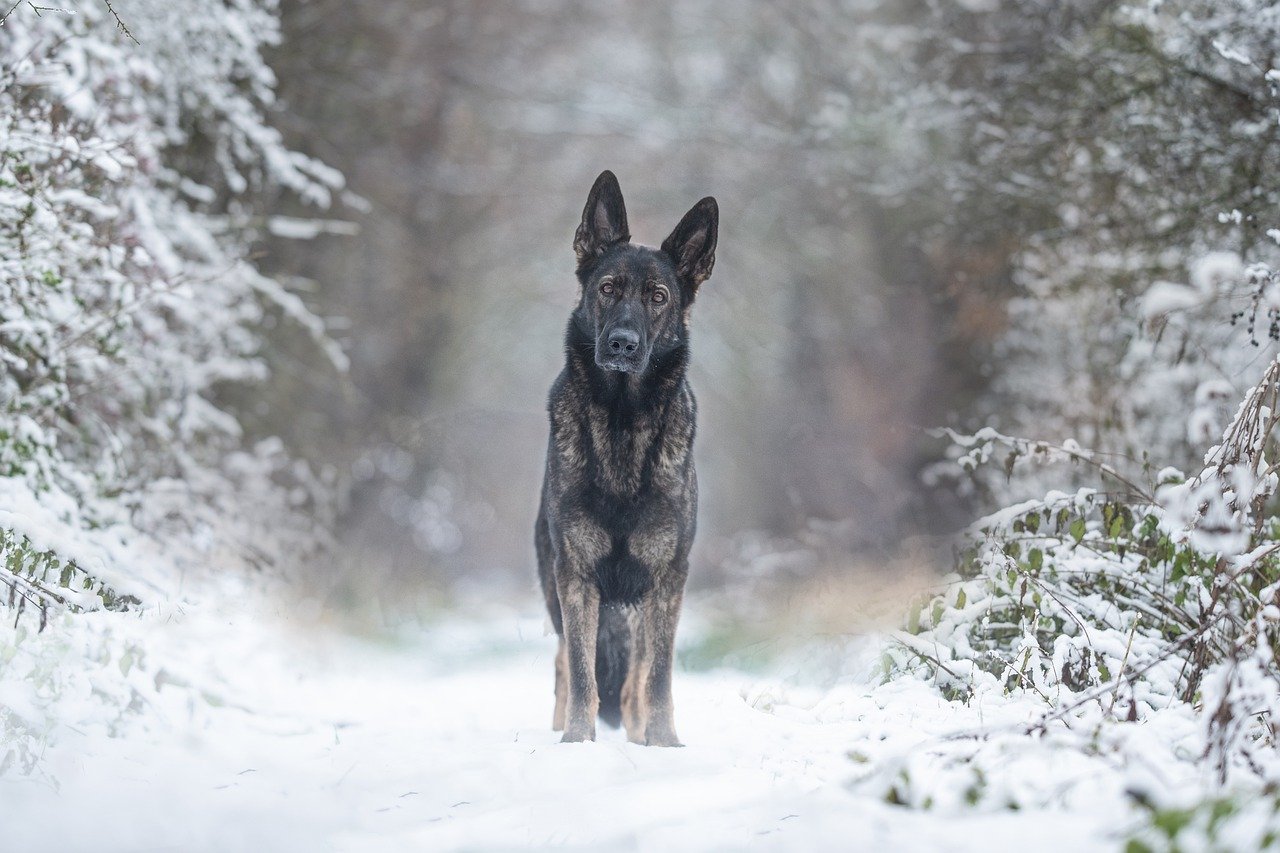
Monitoring Your Pet's Health
Keeping a close eye on your pet's health is like being their personal detective. You need to look for clues that tell you how they're feeling. Regular monitoring ensures that your custom diet plan is doing its job and that your furry friend is thriving. Just like we humans have check-ups, our pets require the same kind of attention. So, how do you go about this? It's simpler than you might think!
First and foremost, you should regularly weigh your pet. A sudden increase or decrease in weight can be a red flag. If your pet is gaining weight, it might indicate overfeeding or insufficient exercise, while weight loss might suggest health issues or dietary inadequacies. You can keep track of their weight changes using a simple chart:
| Date | Weight (lbs) | Notes |
|---|---|---|
| 01/01/2023 | 10 | Starting weight |
| 02/01/2023 | 11 | Gained weight |
| 03/01/2023 | 10.5 | Weight stabilized |
Next, observe their behavior and energy levels. A sudden change in activity, such as lethargy or hyperactivity, could indicate that something is off. For instance, if your usually playful pup suddenly becomes a couch potato, it might be time for a vet visit. Pay attention to their eating habits as well—are they devouring their food or leaving it untouched? This can be a key indicator of their overall well-being.
Another critical aspect is to watch for any physical changes. Regularly check their coat, skin, and eyes. A shiny coat signifies good health, while a dull or flaky coat might suggest nutritional deficiencies. Similarly, clear eyes are a good sign, while redness or discharge could be a cause for concern. Don't forget to look inside their mouths; bad breath or swollen gums can indicate dental issues that need addressing.
But what if you notice something unusual? Here are some common signs of nutritional deficiencies to keep in mind:
- Weight Loss: Could indicate insufficient caloric intake or health issues.
- Dull Coat: Often a sign of inadequate fatty acids or protein.
- Behavioral Changes: Increased irritability or lethargy can be linked to dietary problems.
- Digestive Issues: Frequent vomiting or diarrhea may suggest food intolerance or allergies.
Lastly, never underestimate the value of consulting with a veterinarian. They are your best ally in ensuring that your pet's diet meets all necessary health standards. Regular check-ups can help catch any potential issues early on. A vet can also provide valuable insights into adjusting your pet's diet based on their health status, age, and lifestyle. After all, just like a coach guides an athlete, a vet guides you in keeping your pet at their best.
Q: How often should I monitor my pet's weight?
A: It's advisable to weigh your pet at least once a month, but weekly checks can be beneficial, especially if you're adjusting their diet.
Q: What signs should I look for to know if my pet is healthy?
A: A healthy pet typically has a shiny coat, bright eyes, a good appetite, and an active demeanor. Regular vet check-ups can also help confirm their health status.
Q: Can I adjust my pet's diet without a vet's advice?
A: While you can make minor adjustments based on observations, it's always best to consult with a veterinarian before making significant changes to ensure your pet's health is not compromised.
Signs of Nutritional Deficiencies
This article explores the essential steps to develop a personalized diet plan for your pet, ensuring their health, happiness, and nutritional needs are met effectively.
Understanding your pet's specific dietary requirements is crucial. This section outlines factors like age, breed, weight, and health conditions that influence their nutritional needs.
Selecting high-quality ingredients is essential for your pet's diet. This section discusses various food types, including proteins, carbohydrates, and fats, to ensure a balanced meal.
Proteins are vital for your pet's growth and energy. This subsection details various protein sources, such as meat, fish, and plant-based options, and their benefits.
Exploring the differences between animal and plant proteins helps pet owners make informed choices about their pet's diet and overall health.
This section covers how to safely incorporate protein supplements into your pet's diet, ensuring they receive adequate nutrition without overdoing it.
Carbohydrates provide energy for your pet. This subsection discusses suitable carbohydrate sources and their role in a balanced diet.
Understanding portion sizes and feeding frequency is crucial for maintaining your pet's optimal weight and health. This section offers guidelines based on your pet's specific needs.
Calculating your pet's daily caloric needs is essential for effective weight management. This subsection provides formulas and examples for various pet types.
Establishing a consistent feeding schedule can improve your pet's digestion and behavior. This section discusses the best practices for feeding frequency and timing.
Regularly assessing your pet's health and weight is vital to ensure the diet plan is effective. This section explains how to monitor changes and adjust the diet accordingly.
As a pet owner, it's essential to be vigilant about your furry friend's health, especially when it comes to their diet. Nutritional deficiencies can sneak up on you, often presenting subtle signs that can be easily overlooked. For instance, if you notice your pet has become lethargic or is losing weight despite regular feeding, it could be a red flag. Other signs to watch for include:
- Dry Skin and Coat: A dull, flaky coat can indicate a lack of essential fatty acids and other nutrients.
- Digestive Issues: Frequent vomiting or diarrhea can stem from an imbalance in their diet.
- Behavioral Changes: Increased irritability or anxiety may be linked to nutritional deficiencies.
- Weakness or Muscle Loss: Insufficient protein intake can lead to muscle atrophy and weakness.
It's crucial to pay attention to these signs, as they can help you make timely adjustments to your pet's diet. If you notice any of these symptoms, it's advisable to consult with your veterinarian. They can conduct a thorough examination and recommend dietary changes or supplements that will help restore your pet's health.
Working with a veterinarian ensures your custom diet plan meets all necessary health standards. This section discusses the importance of professional guidance in dietary decisions.
Q: How can I tell if my pet is getting enough nutrients?
A: Regular check-ups with your veterinarian, along with monitoring your pet's weight and coat condition, can help determine if they are receiving adequate nutrition.
Q: Is it safe to create a homemade diet for my pet?
A: Yes, but it's essential to consult with a veterinarian to ensure the diet is balanced and meets your pet's specific needs.
Q: How often should I feed my pet?
A: Feeding schedules vary by pet type and age. Generally, adult pets do well with two meals a day, while puppies and kittens may require more frequent feedings.
Consulting with a Veterinarian
When it comes to crafting a custom diet plan for your furry friend, consulting with a veterinarian is not just a good idea—it's essential. Think of your vet as the GPS for your pet's nutritional journey; they can guide you through the twists and turns of dietary needs based on your pet's unique circumstances. Just like humans, pets have different requirements based on their age, breed, weight, and any underlying health conditions. A veterinarian can help you navigate these factors, ensuring that your pet receives the right balance of nutrients.
Moreover, a vet can assist in identifying any potential food allergies or intolerances that your pet may have. For instance, if your dog has been scratching excessively or your cat seems to have an upset stomach, these could be signs of a dietary issue. By consulting with a professional, you can pinpoint the exact cause and adjust their diet accordingly, avoiding unnecessary trial and error.
It's also important to remember that not all pet foods are created equal. Your vet can recommend high-quality brands that meet the nutritional standards necessary for your pet’s health. They can even help you understand the labels, deciphering the often-confusing ingredient lists. After all, just because a food is marketed as "natural" or "premium" doesn't mean it's the best choice for your pet.
In addition to diet recommendations, your veterinarian can provide guidance on supplementation. Some pets may benefit from additional vitamins or minerals, especially if they are on a homemade diet. The vet can evaluate your pet’s overall health and determine if supplements are necessary, ensuring they enhance rather than complicate your pet's diet.
Lastly, regular check-ups with your veterinarian allow for ongoing monitoring of your pet's health. As your pet ages or if their activity level changes, their dietary needs may shift as well. Keeping your vet in the loop means you can make timely adjustments to their diet, ensuring they remain healthy and happy throughout their life.
- How often should I consult my veterinarian about my pet's diet? It's best to consult your vet whenever you make significant changes to your pet's diet or if you notice any health issues.
- Can I rely solely on online resources for my pet's diet? While online resources can be helpful, they shouldn't replace professional veterinary advice tailored to your pet's specific needs.
- What signs indicate my pet may need a diet change? Look out for changes in weight, coat condition, energy levels, or digestive issues, as these may signal a need for dietary adjustments.
Frequently Asked Questions
- What factors should I consider when assessing my pet's nutritional needs?
When assessing your pet's nutritional needs, consider their age, breed, weight, activity level, and any existing health conditions. Just like humans, pets have unique dietary requirements that change as they grow and age. For instance, a growing puppy has different needs compared to a senior dog. Understanding these factors helps you create a tailored diet plan that keeps your furry friend healthy and happy.
- How do I choose the right ingredients for my pet's diet?
Selecting the right ingredients involves focusing on high-quality proteins, carbohydrates, and fats. Look for natural sources of protein like meat and fish, and consider incorporating healthy grains or vegetables for carbohydrates. Just like we need a balanced meal, your pet thrives on a variety of nutrients, so don’t shy away from experimenting with different ingredients to find what works best for them!
- What are the signs of nutritional deficiencies in pets?
Common signs of nutritional deficiencies in pets include lethargy, poor coat condition, weight loss, and digestive issues. If you notice your pet acting differently or showing any of these symptoms, it’s crucial to reassess their diet. Think of it like a car running low on fuel; without the right nutrients, your pet simply won’t function at their best!
- How can I calculate my pet's daily caloric requirements?
To calculate your pet's daily caloric requirements, you can use a simple formula based on their weight and activity level. Generally, a maintenance calorie calculation can be done by multiplying their weight in pounds by a factor ranging from 15 to 30, depending on how active they are. This helps ensure they’re getting enough energy without overindulging!
- Is it necessary to consult a veterinarian when creating a custom diet plan?
Absolutely! Consulting with a veterinarian is vital to ensure your custom diet plan meets all necessary health standards. They can provide insights tailored to your pet’s specific needs and help you avoid any potential pitfalls. Think of your vet as a trusted co-pilot on your pet's journey to better health!
- How often should I feed my pet?
Feeding frequency can vary based on your pet's age and health status. Generally, puppies require more frequent meals than adult dogs. Establishing a consistent feeding schedule not only helps with digestion but also promotes better behavior. It’s like setting a routine for kids; it brings a sense of stability and predictability!

